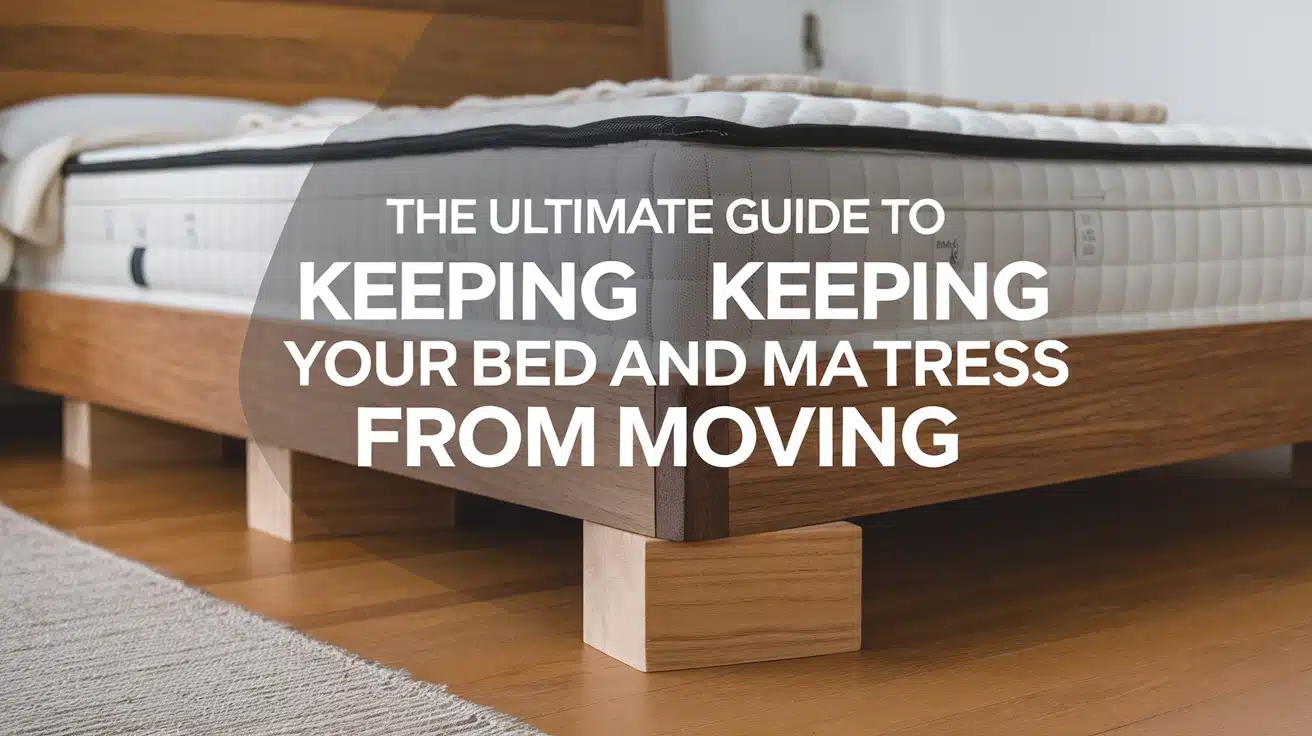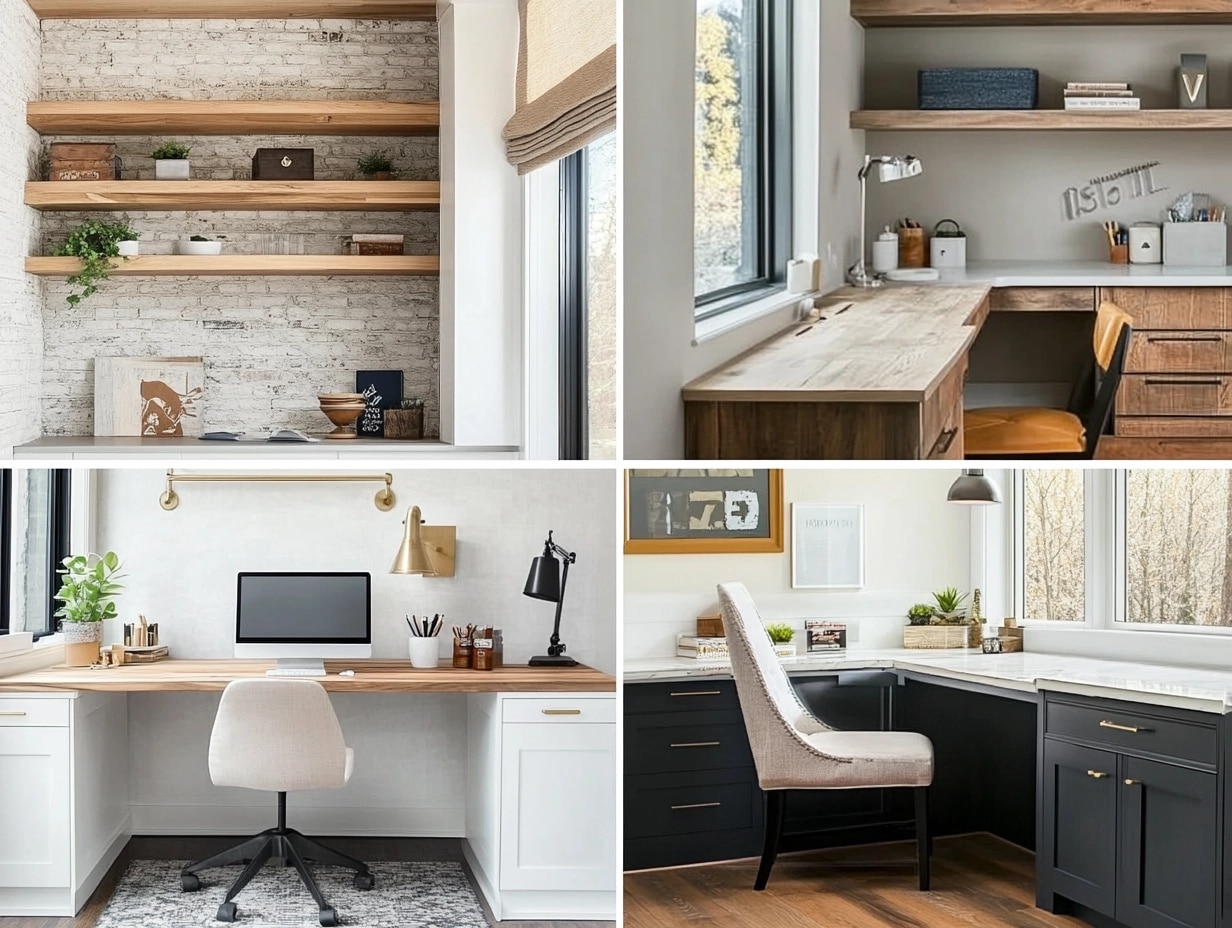Keep Your Bed from Moving with These Quick Solutions
Are you tired of waking up to find your mattress has slid halfway off the bed or your bed frame has shifted on your wood floor? You’re not alone!
Beds and mattresses slipping out of place can be annoying, but fortunately, there are simple solutions to keep everything firmly in place.
In this ultimate guide, we’ll explain the most common reasons why beds and mattresses tend to move and give you practical tips to stop slipping once and for all.
We’ve got you covered, from easy fixes for your mattress to effective products for securing your bed frame.
Let’s examine why these problems occur and explore the best ways to keep your bed set up exactly where it should be—no more frustrating adjustments required!
What Causes Bed and Mattress Slip?
Beds and mattresses often move for various reasons. Understanding these causes can help you find the best solution. Let’s look at the main factors:
1. Smooth Flooring
Many homes have wood, tile, or laminate floors, which can be quite slippery. When you move in bed, your mattress might slide on these smooth floors. This is more likely to happen with lighter bed frames or those without rubber feet.
2. Lack of Grip
Some bed frames don’t have good grip. The surface between the frame and mattress might be too smooth. This can make your mattress move easily when you get in or out of bed. The same goes for the legs of your bed frame on the floor. Without proper grip, the whole bed can shift.
3. Mattress Weight
Light mattresses tend to move more than heavy ones. A light mattress doesn’t stay in place as well when you shift in bed. This is often an issue with foam mattresses, which are typically lighter than spring mattresses.
4. Wear and Tear
Over time, parts of your bed can wear down. The frame might become loose, or the mattress may lose its shape. This can make your bed less stable and more likely to move. Old mattresses may also slide more due to a lack of friction with the bed frame.
5. Uneven Floors
Your bed might slide towards the lower side if your floor isn’t level. This can happen slowly over time, and you might not notice it at first. Uneven floors are common in older homes or apartments.
6. Bed Frame Size
A frame that’s too big for your mattress leaves space for movement. This extra room allows the mattress to shift around. It’s important to match your mattress size to your bed frame size.
7. Movement During Sleep
If you or your partner move a lot during sleep, it can cause the bed to shift. This is more likely if you have a lightweight bed frame or if the mattress isn’t secure.
Knowing these causes can help you tackle the problem of moving a bed or mattress. In the next sections, we’ll look at ways to fix these issues and stabilize your bed.
How to Keep Bed Frame from Sliding

Wood floors can be quite slippery for bed frames. Here are some ways to keep your bed steady:
1. Use Rubber Stoppers
Place rubber stoppers under each bed leg. These small pads grip well and won’t harm your floor. They’re easy to install and remove.
2. Try Felt Pads
Felt pads can work well on wood. They reduce sliding and protect floors from scratches. Choose thick pads for better results.
3. Non-Slip Furniture Pads
These pads have a sticky side for your bed legs and a grippy side for the floor. They come in various sizes to fit different bed frames.
4. Place a Rug Under the Bed
A large rug under your bed can stop sliding. Make sure it has a non-slip backing. This option also adds style to your room.
5. Use Carpet Tape
Double-sided carpet tape on bed legs can help. Be careful when removing it to avoid floor damage.
6. Keep Floors Clean
Regular cleaning maintains good friction between the floor and bed legs.
7. Try Silicone Furniture Cups
Silicone cups fit over metal bed legs. They have excellent grip and won’t damage wood floors.
8. Add Frame Weight
A heavier frame is less likely to move. Consider storing items under your bed to add weight.
9. Check Frame Level
Ensure all legs touch the floor evenly. Use a level to check. Adjust legs or use shims if needed.
These methods should help stabilize standard and metal bed frames on wood floors. For the best results, remember to check and maintain these solutions regularly.
How to Stop Mattress from Sliding

Now that we know why mattresses slide let’s look at some practical fixes:
Use a Non-Slip Mattress: A non-slip pad between your mattress and bed frame can help. These pads have a grippy surface that holds the mattress in place.
Try Velcro Strips: Velcro strips can keep your mattress from moving. Stick one side to the bed frame and the other to the mattress. For the best results, use strong, wide strips.
Place a Rubber Mat: A thin rubber mat under your mattress can increase friction, making it harder for the mattress to slide around.
Tighten Your Sheets: Use deep-pocketed sheets and tuck them in tightly. This can help hold the mattress in place.
Check Your Mattress Size: Make sure your mattress fits your bed frame well. A too-small mattress will move more easily.
Recommended Products for Anti-Slip Solutions
Disclaimer: These recommendations are based on personal preference and experience. None of the links provided are affiliated or sponsored.
1. Non-Slip Mattress Pads

- Gorilla Grip Original Mattress Gripper Pad: This non-adhesive, slip-resistant pad keeps mattresses in place on any surface. It’s available in multiple sizes and can be trimmed to fit your bed perfectly.
- Home Techpro Non-Slip Mattress Grip Pad: This budget-friendly option offers a solid grip to prevent mattress movement, especially on wood and tile floors.
2. Furniture Grippers

- SlipToGrip Furniture Gripper Pads: These rubber grippers, which come in a pack of 8, provide a stronghold for bed frames on wood or tile floors.
- X-Protector Non-Slip Furniture Pads: These high-quality rubber pads are designed to keep heavy furniture, like bed frames, from sliding. They come in various shapes and sizes to fit different bed legs.
3. Rubber Leg Covers

- Slipstick CB652 3-inch Rubber Floor Protectors: These are ideal for metal bed frames. They provide strong friction to prevent sliding on wood or tile floors and protect floors from scratches.
- Wobble Wedge Rubber Shims: These versatile rubber wedges can be placed under metal frame legs to stabilize and prevent slipping.
4. Velcro Strips for Mattresses

- VELCRO Brand Heavy Duty Strips: These adhesive strips can be applied between the mattress and bed frame or box spring to keep the mattress from sliding. They are durable and easy to install.
Additional Tips for Enhanced Stability
Beyond the basics, here are some extra tips to keep your bed steady:
- Secure the Headboard: A loose headboard can cause your whole bed to move. Check the bolts connecting your headboard to the frame. Tighten them if needed. This can greatly reduce overall bed movement.
- Use a Bunkie Board: A bunkie board is a thin, solid board that goes under your mattress. It can add stability to your bed setup. This works well for platform beds or beds with widely spaced slats.
- Tighten Frame Screws: Regularly Loose screws in your bed frame can lead to wobbling and sliding. Check all screws in your frame every few months. Tighten any that have come loose. This simple step can make a big difference.
- Add a Mattress Topper: A well-fitting mattress topper can help hold your mattress in place. It adds weight and can increase friction between the bed and the frame.
- Consider a Platform Bed: Platform beds often have a larger surface area touching the floor, making them more stable than beds with legs. Consider this style if you’re in the market for a new bed.
- Use Bed Slat Grips: Use bed slat grips if your bed has slats. These rubber strips keep the slats from moving, improving their overall stability.
Conclusion
Let’s wrap up our guide on keeping beds and mattresses in place. We’ve looked at why beds move and how to stop it. There are many ways to keep your bed still, from rubber stoppers to non-slip pads.
Remember, a stable bed means better sleep. Regular checks and upkeep can prevent future issues. Whether you have a wood floor or a metal frame, there’s a fix for you.
You can say goodbye to sliding beds and restless nights using these tips. Your bed should be a place of comfort, not a source of frustration. You can create a steady sleep space that stays put night after night with a little effort.
Sweet dreams await on your newly stabilized bed!







